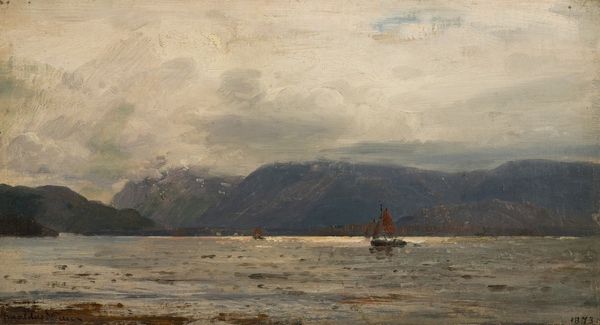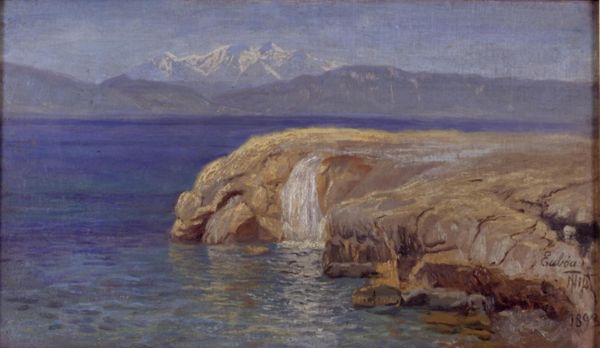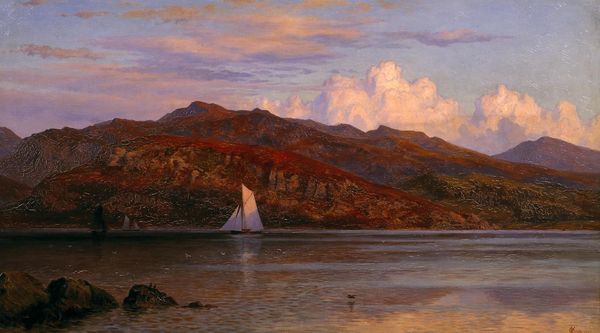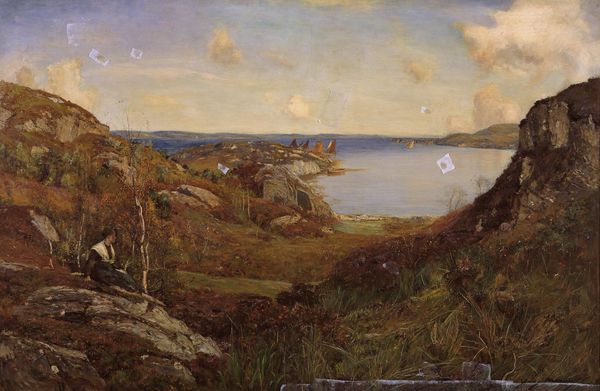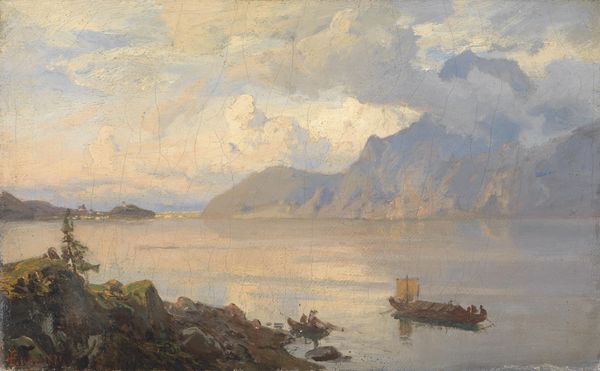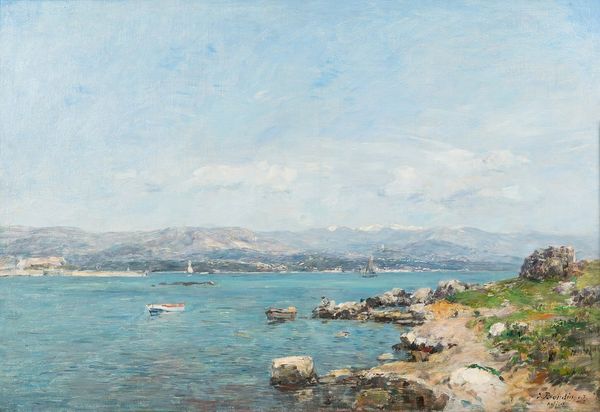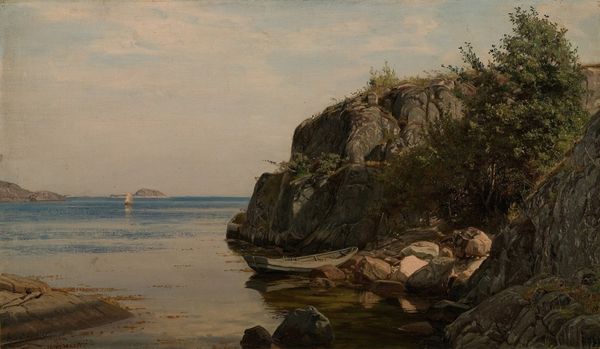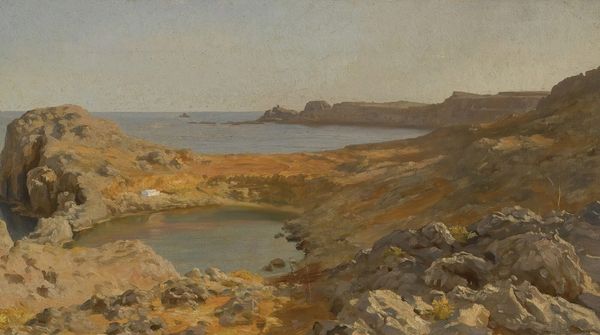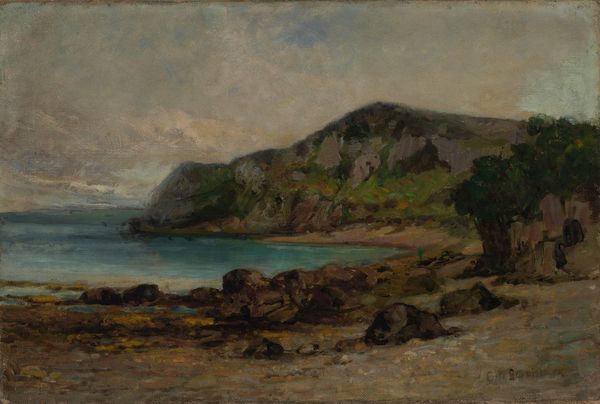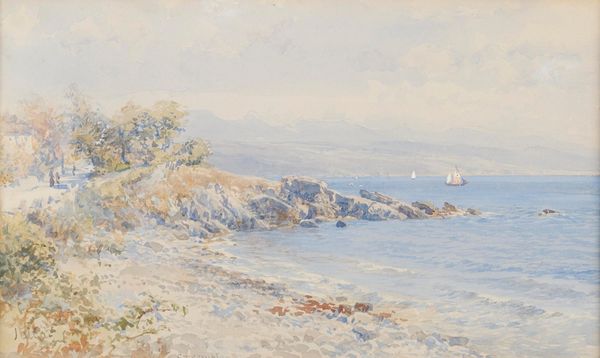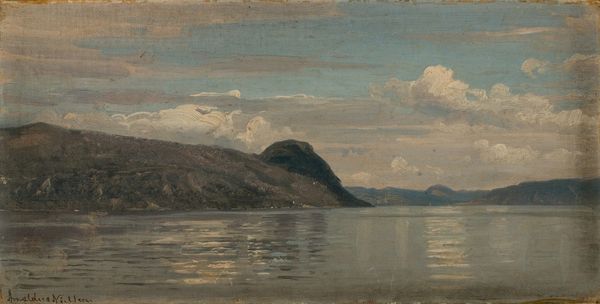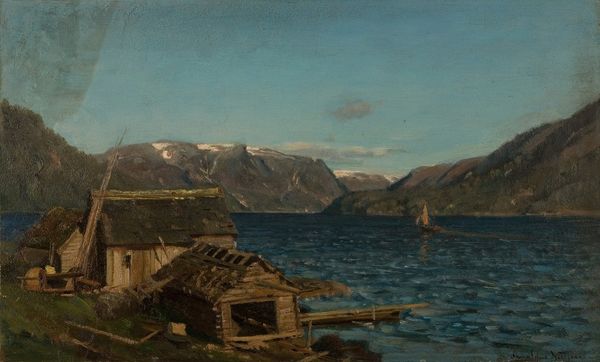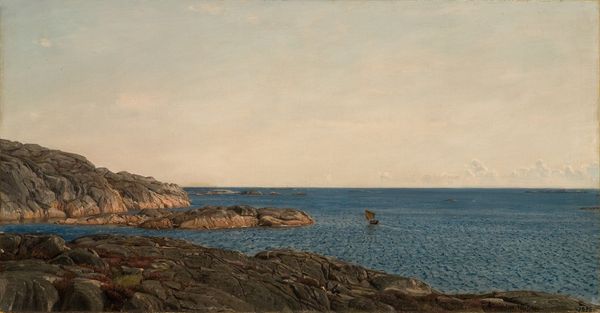
Copyright: Public Domain: Artvee
Curator: The painting before us is "Bris, Terøen" by Amaldus Nielsen, completed in 1897. Immediately I am struck by the intense blues! Editor: Yes, a gorgeous sweep of ultramarine confronts us head on. There's a visual power play between the jagged, dark rocks in the foreground and the tranquil expanse of water leading back to those imposing hills. What's your take on that tension? Curator: Well, Amaldus Nielsen was fascinated by the drama of the Norwegian coast; the rough meeting the smooth, I think. To me the dark rocks feel like ancient, watchful presences. The tiny sailboats hint at journeys, escapes. Editor: Indeed, this speaks to the Romantic ideal. Consider how landscapes like this offered an escape from urbanisation and industrialization. Here, we have a timeless encounter with the vastness of nature and, inevitably, the sublime. But also consider who had the privilege to embark on these journeys, depicted here or otherwise, or to contemplate nature’s vastness… Curator: You're so right. This type of work represents a particular social moment. Though you can't deny the man had talent with his paint brush! Look at how the light kisses those rocks! And Nielsen completed this "en plein air," you know, right there in the landscape itself, chasing that fleeting light and atmospheric effect! I can practically smell the salty air. Editor: Absolutely! But who is included, and who is erased from the frame? Seascapes historically—and often even today—carry complex colonial and capitalist histories. How might this idyllic scene serve to normalize and obscure specific political and social realities for 19th-century Norway? Curator: An interesting counterpoint. Still, art can be both beautiful *and* complicated, right? This painting stirs a kind of longing within me—that quiet cove seems the perfect place to think, reflect... or, you know, simply dream. Editor: Agreed. Art, like life, is layered and multifaceted. Looking at this piece today, I'm struck by the ongoing need to interrogate not only what we see, but also what is rendered invisible. Curator: Absolutely. It is important to remember that things aren't always how they appear, including paintings.
Comments
No comments
Be the first to comment and join the conversation on the ultimate creative platform.
